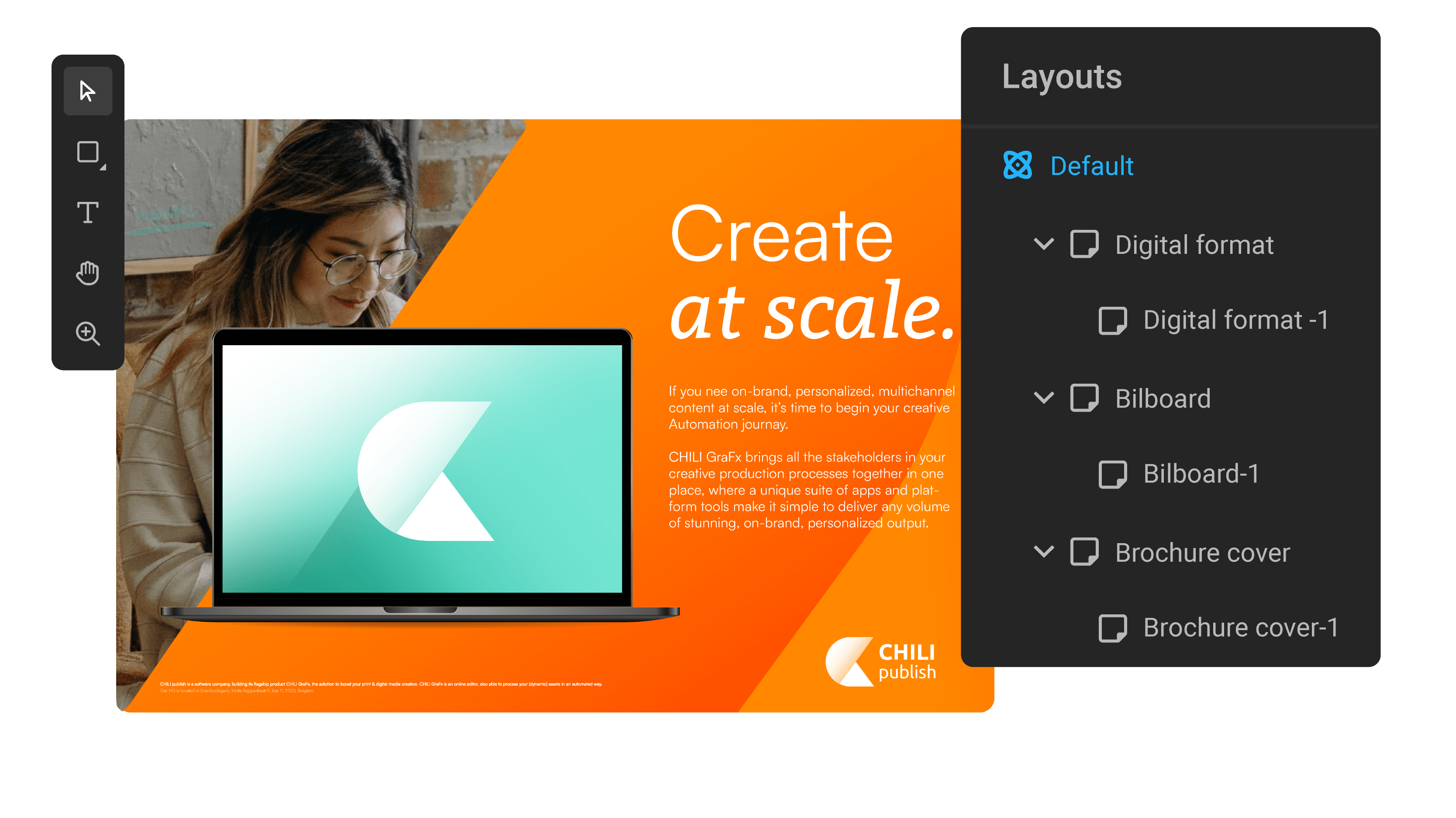Web-to-Print Software for the Multichannel
CHILI GraFx makes it simple for marketing pros at brands and agencies to create, share and output high quality print content. Integrate GraFx with any tech stack to effortlessly produce standard print, wide-format, packaging, digital, and more – all online!
Our Customers
Discover how big brands, retailers and agencies use CHILI GraFx to create, share and output high quality print content.
Design Anything
Your designer starts the process by turning an imported design file into a Smart Template with state-of-the-art layout tools. They lock in brand guidelines, while enabling variable content elements for users or data sources. Their template is published on a branded web portal, and made available to users or API calls.
Personalize and Localize from Anywhere
An end-user then logs in to the portal from anywhere across the globe to provide localization and personalization of content in the hosted Smart Template. Instantly accessible, the template delivers effortless usability while retaining strict brand control.
Use Any Data Source for Variants
CHILI GraFx has plug-and-play connectivity with many tech stacks as well as a complete API for developers with a wrench. For designers and developers alike, headless production that connects Smart Templates with any data source has never been easier or more powerful.
Output Alternative Layouts On-the-fly
CHILI GraFx also boosts your output versioning without eating up design team time! Its automation intelligence is so advanced it has to be seen to be believed. GraFx can output almost any layout variant from a single source, while still maintaining the highest print quality and design integrity.
Print Every Job Perfectly
Nothing eats into margins like being forced to rerun a print job. CHILI GraFx has professional print production baked in at core. With support for ICC color, CMYK and Spot color spaces, registration, and, of course, full preflighting, you can send your jobs to print with complete confidence.
Our customers can finally take full control of their own branding material creation process.
Luke Alexandre
Global Head of Sales & Partners - Papirfly
Get a demo
We render millions of designs every month. We got you.
Contact us to learn all about CHILI GraFx and how it can drastically speed up the creation of print promotional materials.
Rather see CHILI GraFx immediately in action? Click here to watch a product demo recording.
United States Office
222 S Riverside Plaza
Chicago, IL 60606, United States
+1 (646) 741-5276
Belgium Headquarters
Korte Keppestraat 9, bus 11
9320 Aalst, Belgium
+32 2 888 65 11
